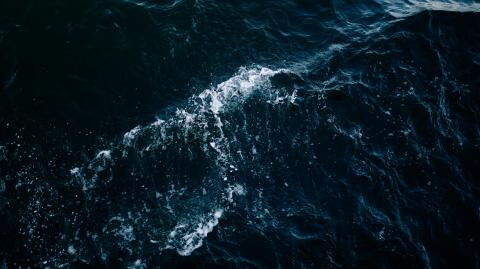Has humanity finally touched the bottom of the sea? In any case, a study published last month in the magazine ‘Marine Policy’ has identified the deepest trace of pollution caused by humans ever found.
Discover our latest podcast
During their work, the researchers from JAMSTEC (Japanese Agency for Technology and Marine and Terrestrial Science) analyzed a huge amount of underwater images. They have been accumulating these images for almost thirty years in a database called Deep-sea Debris Database, which is open to public access online.
Upon completing a little over 5,000 dives, the submarines and underwater drones involved were able to provide many images from the depths of the ocean, each more eloquent than the other.
After analyzing thousands of these underwater photos, scientists have identified no less than 3,425 plastic components, all kinds of human debris and macro plastics bigger than 5mm in size.
The vast majority of the litter was disposable items
No less than 90% of the rubbish was found to come from single-use plastic items, which are still frequently used by businesses. Governments around the world are trying to ban these plastics because if we don’t do something, the amount of litter that pollutes our ocean will triple by 2025.
One of the more striking images was taken almost 20 years ago to the day (May 20th 1998). It shows the farthest-reaching waste ever discovered in the ocean: a plastic bag. It was found lying at nearly 11,000 metres deep on the ocean floor of the Marianas Trench in the Pacific, the deepest abyss ever discovered.
Two decades later and the plastic container still exists, but it has now broken down into microplastic. This is a much more harmful substance.
A threat to underwater wildlife
There’s even more proof of the disastrous environmental damage that plastic pollution is having on the ocean. In 17% of the images, deep-sea creatures were spotted next to the litter, and it’s not only the wildlife at this sea-level that is in danger. The researchers claimed in their unfortunate announcement:
Given that deepest part of the ocean is probably the final destination for plastic debris, their frequent occurrence and wide distribution at these depths indicates that a large number of them are circulating throughout the water column and in high seas.
One notable example is the recent tragic fate of a sperm whale that was stranded on a beach in southern Spain after ingesting nearly 30 kilograms of plastic. And then there’s the frightening video which showed hundreds of pieces of litter floating in the water, taken by a diver off the shores of Bali. However, it is hoped that measures will soon be put in place to improve this worrying situation.
The public also wishes to help, as shown by the project launched by a British start-up to create a fully biodegradable bottle. There’s also the initiative launched by the Dutch inventor, Boyan Slat, to clean up the ocean. After having hit rock bottom, it seems that humanity is trying to bounce back after finally realizing the importance of protecting our marine ecosystems.















